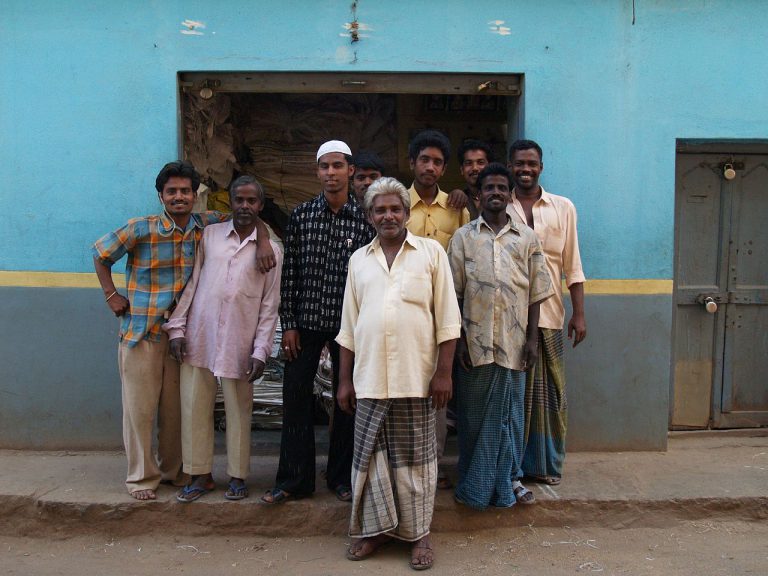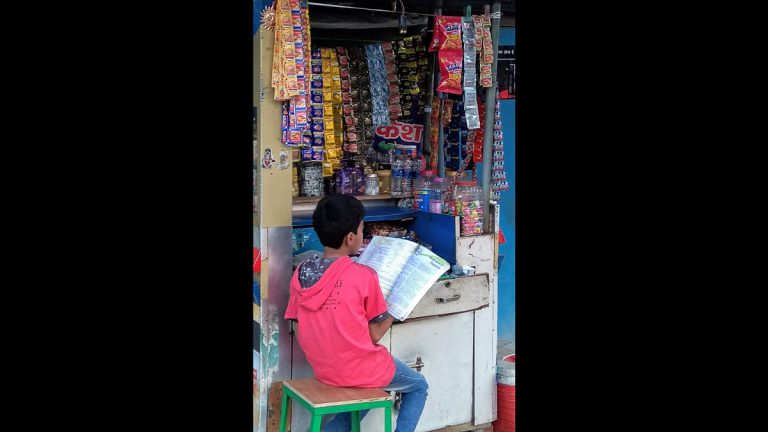The Kalapani dispute: Indo – Nepal relations

Deeksha has a Masters in Political Science from Pondicherry Central University and has worked with various organizations and think-tanks. Her basic areas of Interest includes-gender relations, women studies, global terrorism, etc. She hails from Assam.
India and Nepal share exceptionally wonderful bilateral ties-based on age-old culture and history. This relation has nurtured over the many years and has spread over economic, political, and social arenas too. However, this relation has found new and fresh cracks pertaining to the Kalapani Dispute and Ram Mandir controversy. Both the nations portrayed a very well-constructed and structured relation among themselves to the world, but the Kalapani issue has brought about numerous controversies and significant disturbances in their long diplomatic ties and bilateral bonding. This has opened up new avenues for other nations, for instance, China, to take advantage of this issue and strengthen its negative foreign policy towards India and show open support to the Nepal Government.
Beginning with the inter-border dispute at Kathmandu, to Indian Government interfering in Nepal’s internal laws, numerous allegations have been raised against the Indian Government.
The Kalapani Issue being at that center of the tensions hits out significant attention at the moment. This article shall throw prominent light on the evolution of India-Nepal relations thoroughly.
India-Nepal Relations laid its mark in the pages of History starting with the 1950 Indo-Nepal Treaty of Peace and Friendship and set forth the historical beginning of forming strong, mutual bilateral trade ties. The two countries established diplomatic relations on 17th June 1947, promising each other a century of peaceful coexistence, sovereign equality, and respecting each other’s differences. The open border between the two countries remains a unique feature that enables close cooperation among them, and the frequent visits of the leaders of both the nations and exchange programs remained the hallmarks of this relationship for ages.
India has also served as the largest Foreign Investor of Nepal and is providing aid and is jointly constructing hydel power projects with Nepal.
However, on May 8th, India’s Defence Minister virtually inaugurated a new 80 Km-long road in the Himalayas connecting to the border of China, which the Nepalis government strongly condemned as interfering in the internal matters of the country. The serious nature of the issue was when the Nepalis Government deployed political forces in the area and summoned the Indian ambassador.
The Nepal Government has always played a dual strategy being a landlocked country to maintain cordial strategic ties with both India and China, which has, in turn, deteriorated India’s trust over Nepal.
Indo-Nepal relations: The road so far
India-Nepal relations have set an example of bilateral ties amongst numerous other countries in the international arena. The inauguration of the first-ever cross-border petroleum pipelines in South-Asia in 2019 has accelerated energy collaborations and bilateral ties between the two. The “Roti-Beti ka Rishta” tie between the two nations highlighted close family and marital ties for a long time.
In the economic sphere, the government of India has always offered its helping hands to Nepal with the reconstruction efforts of the Earthquake of 2015. B.P Koirala Institute of Health Sciences, Dharam Emergency and Trauma Centre at Bir Hospital, Kathmandu, and Manmohan Memorial Polytechnic at Biratnagar are some of the projects where the Indian Government has always shown a positive approach. Both Nepal and India, sharing the same diplomatic approach and worldview- and are members of the Non-Alignment Movement, SAARC, BIMSTEC, etc.
India’s interference in the internal affairs of Nepal and vice-versa
Keeping in mind the intimate relations shared by Nepal-India, Nepalis considering India as its second home, new cracks have been reflective of the relationship between the two countries. The relation between the two countries is at the lowest point since the five-month “Indian Blockade” of 2015. The gap between the two has been increasing due to the controversial Kathmandu Issue.
The beginning:
On June 13, 2020, the Nepal House of Representatives announced a historic second amendment to its 2015 constitution by updating its map and national emblem and re-organizing its political map recently by including areas of Kalapani, Lipulekh, and Limpiyadhura. It covers an area of 335 square kilometers (129 sq miles) that India also claims, which gave rise to an open declaration of border-dispute by the Indian Government.
Reacting to this non-discussed move by the Nepal Government, the Indian Government, also on November 2, 2019, made amendments to its political map and included the disputed area of Kalapani as part of India, which was heavily criticized by the Nepal Government.
Modi’s first visit to Nepal in August 2014 was highly successful in addressing the Constituent Assembly. But since this visit, Nepal’s Government has perceived India’s engagement as a serious threat to its New Constitution.
However, on the eve of 68th Republic Day, Indian Ambassador to Nepal Ranjit Rae stated that India has never had any intention of interfering with Nepal’s internal issues; instead, they have always forwarded a helping hand to them. India always wishes stability and peace as chaos and instability shall shutter down both the countries, having shared open borders. Rae also pinpointed that yes, the Nepal Government might perceive the Kathmandu issue as a threat to its internal sovereignty, but the citizens of Kathmandu believe the opposite.
Rise of Communist Party in Nepal: Role of China
Nepal being one of the least developed countries during 1990, saw widespread civil protests all over the nation, which led to the restoration of democracy and the introduction of constitutional monarchy and a parliamentary form of government in Nepal. The two main communist parties of Nepal won the first democratic elections over Six provinces out of seven during the 1990s. The Communist Party of Nepal(Maoist Centre) remained in power from 1994 to 2018. (Bhaitara, Feb 21, 2018)
However, numerous splits over the past six decades have forged the two most politically powerful parties to join hands to become one under the name of the Nepal Communist Party(NCP), signing the Seven-Point Agreement between the Communist Party Nepal(Unified-Marxist Leninist) and Communist Party Nepal(Maoist Centre).
The ideology of the new party is Marxism-Leninism and has been following a multi-party democracy. Kp Sharma Oli is the current Prime Minister of Nepal, has been regarded as the most powerful leader of the country to date, who was elected on February 15, 2018.
Role Of China in heating up tensions between India and Nepal
Keeping in view the heated border issues between India and China and India Government banning prominent Chinese Apps signaling a complete boycott has opened up new avenues for the Chinese Government to take advantage of the issue and mark the beginning of new alliance formations with the Nepal Government. Border tensions between India and Nepal have reached new heights as both countries claim territory near Lipulekh in the Mahakali River Basin. The Nepal Government was clear in favoring China, which was proved quite well when Nepal’s P.M made a statement highlighting “Indian Virus was more lethal than the Chinese and Italian now.” The implications of China’s improved relations with Kathmandu has become a major concern for many Indian Diplomats. (Bhushal, 2020)
What remains at the crux of the Kalapani dispute?
The Kalapani-Limpiadora-Lipulekh trijunction located on the banks of the Kali River has now remained a very highly disputed issue which hails from the Sugauli Treaty between the East India Company and Nepal’s then Gorkha monarch, King Prithvi Narayan Shah. The Kalapani territory is an area located in the Pithoragarh district of Uttarakhand, yet the Nepal Government strongly condemns this by highlighting that Kalapani lies in Darchula District, Sudurpaschim Pradesh. (Purohit, 27 May 2020)
Recent Upsurges
The border dispute reached its peak when India opened an 80km road linking Uttarakhand with Lipulekh, across the disputed piece of land. India released its new Political Map following the reorganization of J&K, claiming the Kalapani area belonging to India, and that fuelled the heated tussle. According to the Sugauli Treaty between Nepal and British India in 1816, the Mahakali River that runs through the Kalapani area is the boundary between the two countries, but Nepal claims that the west part of the river forms the major part of Nepal and has its roots in Nepal.
Commenting on the New Political Map of India, Nepal’s Ministry of External Affairs commented that they are not at all ready to offer their consent to India’s decision, while India has considered its map as accurate.
Kalapani area is of strategic significance in South-Asia Diplomacy as it forms the tri-junction between India, Nepal, and China. (Malapat, 2020)
How has Ram Temple served as a major development in worsening Nepal-India bilateral ties?
The Nepal PM Oli has made a controversial statement by stating that Ram was a Nepali, and his birthplace was Thori in the west of Birgunj, which gave rise to a river of tweets against Oli. He also claimed that India has engaged in “Cultural Encroachment” by creating a “Fake Ayodhya.” Many reports claim that Oli was misinterpreted and got confused with his words himself, while he was suggesting further research on Ram JanmaBhoomi. Earlier, both the countries mutually inaugurated a bus service called “Ramayana Circuit” for “Bibaha Panchami,” where marriage processions are exchanged between Ayodhya to Janakpur, Nepal every year.
Concluding observations
The future of Indo-Nepal relations is uncertain pertaining to the heightened border tensions and Covid-19 pandemic. The two countries should find a middle path to preserve their age-old friendship and culture without harming each other’s territorial policies and should work together to prevent third parties such as China to extract benefits out of the border dispute. India should let go of its silence and take a stand that would serve as an acceptable solution to both nations. Though the border dispute looks minor, allowing it to foster and spread fast wouldn’t be a practical solution keeping in mind the Himalayan geopolitical implications.
References
- Bhaitara, K. D. (Feb 21,2018). The (Re) Birth of the Nepal Communist Party. The Diplomat .
- Bhushal, R. (2020, July 08). Tensions between India,China and Nepal could hinder climate research in the Himalayas. Retrieved from Scroll.in.
- Malapat, S. (2020, May 24). Is there a China Hand in India-Nepal border spat? Times Now News .
- Purohit, K. (27 May,2020). China on their mind:Why the India-Nepal border has become a global flashpoint. This Week in Asia .
- Sood, R. (8 June,2018). A reset in India-Nepal Relations. Observer Research Foundation .
Featured Image Credits: Wikimedia








